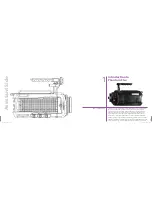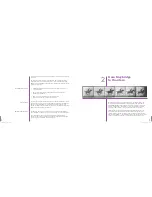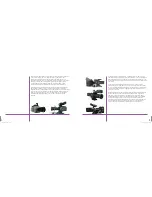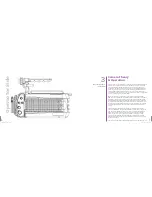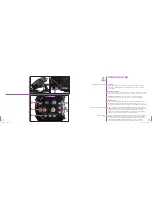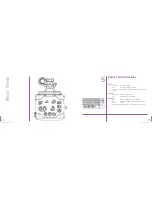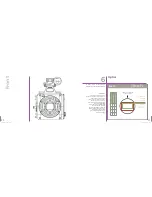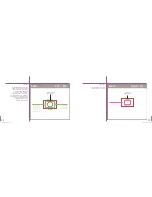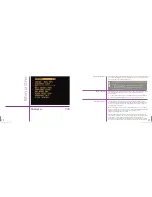
What the Flex Does
in a Nutshell
7
6
Phantom Flex Manual
Phantom Flex Manual
The key to the Flex’s capabilities as a high-speed camera is the ability to move
vast amounts of video information from the camera’s sensor to some form
of storage extremely quickly. The Flex can read over 5 billion pixels (over
6 gigabytes of data) per second. (In comparison, a typical 1080P HD camera
reads only 62 million pixels per second.) At this rate a 1-terabyte hard drive
could be filled in under 3 minutes.There doesn’t yet exist any permanent,
portable storage that can record at these speeds.The one form of storage able
to keep up with this torrent of data is RAM.
When shooting at the highest frame rates, images go straight to RAM.
RAM acts as a circular buffer – new frames push out older frames. This limits
the length of a shot (it can only be as long as what fits in RAM), but allows
great flexibility in capturing fast events.The camera can be left continuously
recording without consuming any permanent storage. At the critical moment
the camera can be triggered before, during or even after, the event, stopping
recording and allowing the shot to be played back or saved to permanent
storage.
The primary factor determining the maximum frame rate of the camera
is memory bandwidth. There is a fixed number of pixels that can be pushed
from the sensor to RAM per second. One way of increasing the maximum
frame rate is to reduce the resolution of the recorded images. The same
number of pixels per second will give more frames of lower resolution.
The Flex can be cropped both horizontally and vertically, either of which
will both increase the maximum frame rate as well as the number of frames
that will fit in memory.
One other factor that affects the maximum frame rate is a new camera mode
Camera Theory
& Operation
3
O
p
e
ra
o
to
r
S
id
e
Summary of Contents for Flex
Page 1: ...MANUAL ...
Page 2: ...MANUAL New York Chicago Los Angeles First Edition 09 20 10 www abelcine com ...
Page 52: ...94 Phantom Flex Manual ...
Page 53: ......





